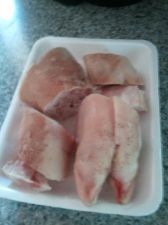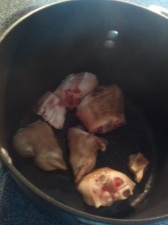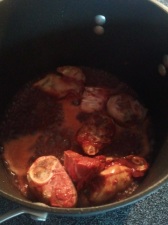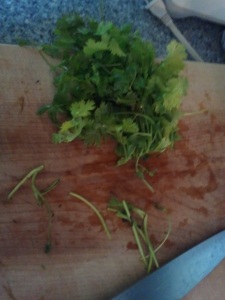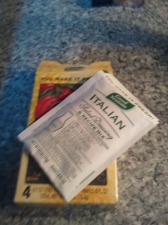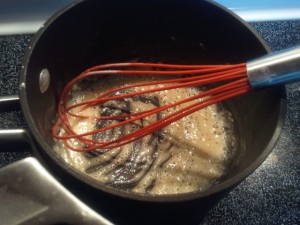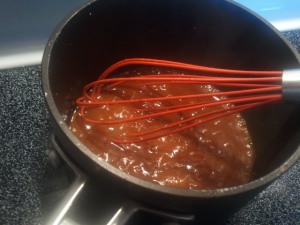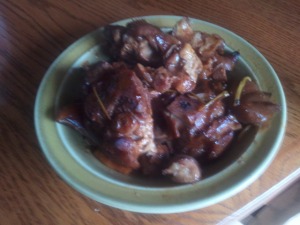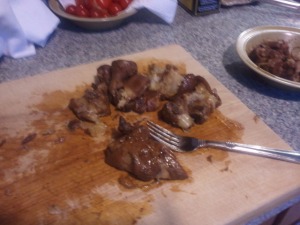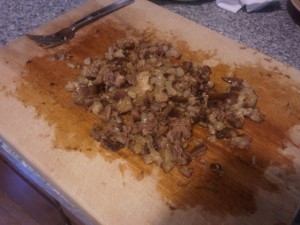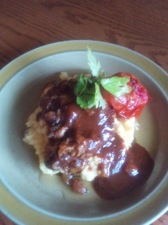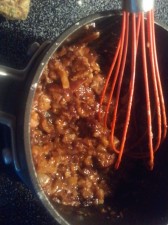There are so many things I’ve come to love about the world of Street Foods, Truck-based or not. But easily one of my, if not THE, favorite point comes within the use, exploration, discovery, display, and whatever other words can describe the noted exhibition of those ingredients rarely seen in our everyday American culture. I am of course talking about such thing as Offal (organs, tongue, feet, etc), Insects, and other random products which, so thankfully, have found an increase trend in the National Restaurant scene. Though of course it’s true surgance came through the streets, both international and at home, especially in the all-familiar Beef Tongue Taco (which you can find at Chef Shack and other taco trucks).
I love being able to play around with these whenever I can get my hands on them, and lucky for me I’ve found the local Cub and other chain stores have started stocking things like Beef Tongue, Liver, Marrow Bones, Tripe, and other random items in the frozen section. Just this week, I decided to stop by once again, and happened to pick up something I hadn’t had the chance to work with yet, despite a burning interest at seeing its use in a certain episode of Triple D.
Oh yeah, Pig’s Feet baby. It may be split as opposed to the nice whole pieces of them, but they still feety. Memories of those weird appendages hanging suspended in a pickling jar aside, I still remember the scene of these guys coming out, fall-apart tender from a hot broth, with a spiky white-haired host describing them as “80% Fat.” And boy, was he right about that, but I’ll get to that later…
So, what to do with this mound of bone, fat and skin? My first time working with it, having no outside knowledge concerning other ways to manipulate the pork paws (besides “pickling”… ugh), best to stick with the general Go-To for all Offal meats: Braising.
For those who need a quick refresher course on the concept, braising is simply the employment of Two different cooking styles, most commonly a Quick, Hot Sear to the product followed by a Long, Slow Poaching (flavorful liquid preferred); in China they actually employ a reversal of this, boiling some meats for a while before finishing in a wok!
If following along, make sure to get a nice, wide-bottomed pan up to high heat; I just use a Dutch oven so I can do both cookings (though you can sear in one pan and poach in another if preferred). The oil really should be SMOKING when poured in; dump in the meat, leave for about a minute or more to get that hard color (w/out burning) and turn to get all sides.
Going from here all depends on what one wants to cook it in, and what one has; the only thing I suggest is not doing just water. Since I sadly didn’t have any stock or broth around, I looked to add flavor in other ways. Luckily I had some tomato paste leftover in the fridge, so I employed a classic technique learned through school. Tossed it into the hot oil, along with some whole garlic cloves, actually letting it sorta caramelize/sear/whatever for about a minute (stirring).
By now, the bottom of the pan has a little bit of crusty bits from the pork, tomato paste, and who knows what else stuck to it. This we call “Fond,” and it’s the delight of all broths, stews, etc; we WANT this (so long as it’s not all black and burnt), so before adding whatever base liquid, we need to deglaze that pan. As such, I added the rest of a bottle of red wine (can also just use water) to boil and dissolve the concentrated flavors, scraping the bottom with a non-metal utensil to get it all off.
Once done, I filled it to the top with water (wish I had stock… sigh) and added in some stalks of celery and carrots to help provide that aromatic background the broth would have had, along with herb stalks (had some cilantro handy) and a little something else.
Yeah, pre-packaged spice mix. Don’t normally use things like it, but the folks used this dressing in a tasty dish a while back, we had some left, and again I needed something to fill in for depth and complexity. Remember this, following a set recipe is all well and good, but we don’t always have the needed materials on hand; that doesn’t mean we have to drive all the way to the store to buy something JUST for a one-time use. Learning to use random things we have in place of what we don’t not only allows us flexibility in cooking, but a great way to use up leftovers!
All that’s left to cook it fully is to cover and simmer for at least 2-3 hours. Once done you’ll have pieces of pork feet that’ll pull right from their bones with just a tug of the fork.
While this is cooking, there IS something that needs contemplation; a sauce. Even with its flavor absorption and moist texture, I’ve found many braised meat meals just aren’t complete without some sort of sauce to raise them up, preferably one made with the same cooking liquid. My personal favorite thing to do is simply turn it into a gravy, or just reduce the liquid down until saucy, though not all cooking broths will do this properly (depends on what’s in their).
Goin’ with the gravy, then, we start, of course, with a Roux: a 50-50 (ish) mix of butter, melted in a pan, and flour, added to it. A very classic ingredient to many French sauces, this allows a sauce to actually thicken while also providing a little flavor if handled right, depending on how long it’s cooked after combining the two ingredients. It’s said that classic French “Roux Masters” can identify 15 (or more) different stages of roux as well as know each of their proper uses. The rest of us mortals, on the other hand, happen to stick with 3: Blanc (white), Blonde(… blonde), and Brun (Brown).
Cooked very briefly, the little paste (pictured) will actually lighten a bit in color, which is blanc; left to start darkening a bit, without actually browning, and it has reached the blonde stage. These are well known for their use in cream-based (blanc) and light-stock or other liquid based gravies. I, on the other hand, am going for a darker gravy, so I cooked it even further, to a nutty-smelling, coppery brown color. After which I added some of the liquid from the braise (after it had enough flavor from reducing and the meat) until it was thin, whisking constantly until it boiled to a good, sauce-like consistency. (on a personal note, I also decided to add a bit of brown sugar and bbq sauce to adjust my flavors)
I know I didn’t really say TOO much to explain the idea of roux and its use, but all you need to know is this; the more/darker you cook a roux, the more flavor it provides, but inversely the less it’ll actually thicken. And Traditionally, one tries to match the color of the roux with the color of the sauce used.
My sauce ready and on the side, I can return to the pork, gingerly separating it from the rest of the hot liquid.
With all the little knuckles and joints and whatever, takes a bit of time to remove the hot flesh from the bones.
And now, one can make the choice to eat them in these big, rich chunks, or chop them up fine to use in your own little street food mementos. I of course chose the latter (though I did munch on some bigger pieces beforehand…).
Once prepared, its uses are various, whether it be serving over a warm polenta with roasted tomatoes and sauce…
Or mixing with the gravy itself, as such:
And placing in a little taco like so. Maybe a little pico de gallo and slaw, or in my case some leftover cooked kale, shaved baby fennel, and cilantro.
Oh, and how does it taste? If you’ve ever had chicken’s feet, it’ll provide you with an idea, only even more of that tender Fatty, Cartilage-y type substance, a little bit of meat here and there, mmmmm. It may not sound good to some people, but this is tasty stuff, especially paired with the right things (was great with that polenta). Lot of that good meaty “gelatin” inside; it’s actually sorta funny, the leftover in the fridge have actually turned back into a sort of jelly themselves.
Well, a little long for a post about just braising pig’s feet, but any good talk of Offal needs to be. And whether it be at home, restaurant, or Truck, cooking Offal or just a tough piece of shoulder, everything here works. Hopefully you were able to find at least some enjoyment in this discussion of the off-used products, I know I did.
Until my next long-winded dialog, Good Luck and Good Eating to all!

